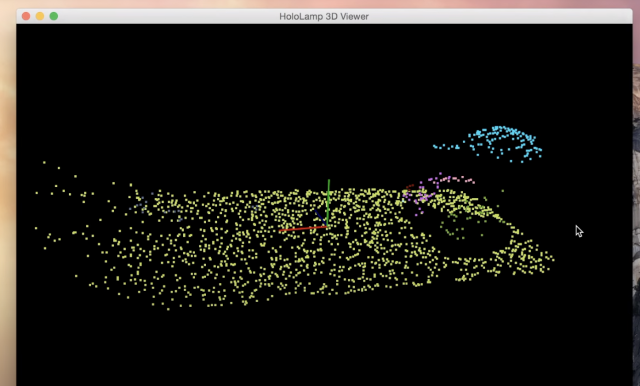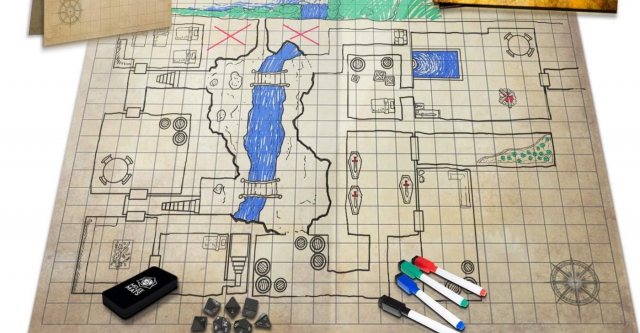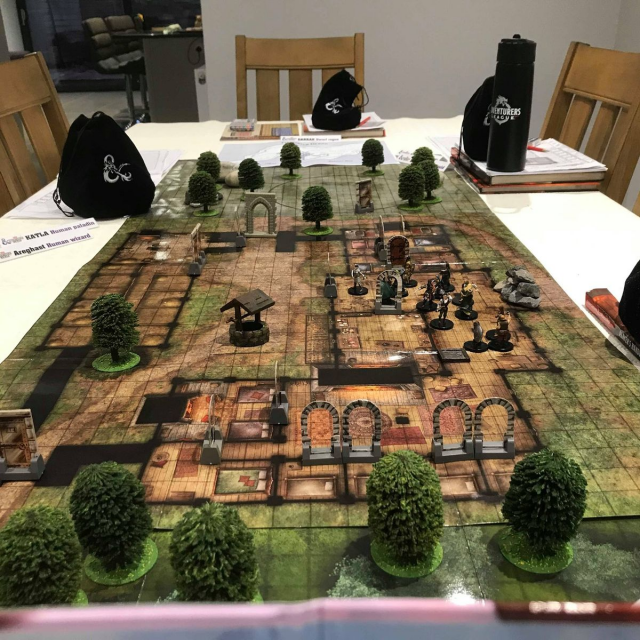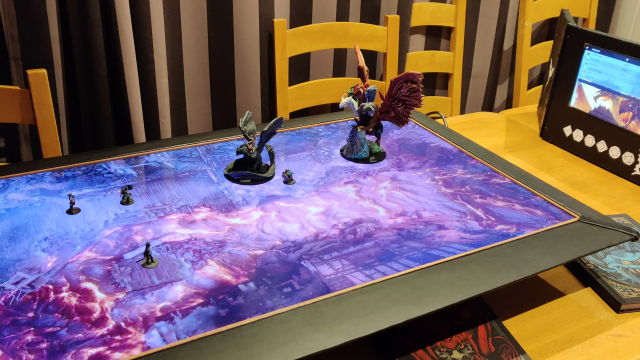What is HoloLamp?
HoloLamp is a portable device that leverages on PICO projectors to offer glasses-free and hands-free augmented reality experiences.
HoloLamp’s technology warps the image being displayed so that the image users see projected is what their eyes think it would see if it was in 3D.
The lamp unit simply requires a HDMI output and a USB port and comes with an SDK in Unity for developers to build applications with HoloLamp.
Why is Holo Lamp Engaging?
HoloLamp is a interesting concept to me because it takes away all the hardware around XR at the moment like glasses or a mobile device with a camera required to experience XR, and is still capable of delivering an immersive 3D experience right in front of the guest.
Some features of HoloLamp include:
- Pico Projector
- Video Capture
- Face Tracking Technology
- Spatial Mapping
- 3D holograms
Use Cases of HoloLamp (Dining & Special Effects)
One use case that HoloLamp has been demonstrated for that is interesting, is its use at food establishments.
We can expect to see HoloLamp making waves in the gastronomic space as despite it having reached many heights and elevated magnitudes from orthodox dining, it may plateau in the near future. By using a tool like HoloLamp, we are able to further enhance the gastronomic experience farther from just how the dish tastes, looks and is presented. This extension can be used pre, mid and post dining to tell an even more compelling storyline, as well as curate interactive dining experiences without being limited by manpower.
Another use case as demonstrated by HoloLamp is for bringing miniatures to life with its 3D algorithms.
In the video above, it is fascinating to see that HoloLamp is able to map the space around the LEGO miniatures and project 3D special effects with reference to the miniatures.
Feature Discussion
Overall, the base functionalities of HoloLamp remain unchanged. However we can discuss the feature they have been adapted into, for use in the above applications.
Dining Use Case
In the dining use case, it is able to project a to-scale representation of the food, as well as a the background and explanation of the dishes. A 3D chef avatar can also be seen assisting the user and maintaining eye contact with the guest. Interestingly, it also allows user to interact with the projection by adding or removing dishes to their order.
Unlike QR code menus, having the HoloLamp placed on the table allows to-scale food portions that can help users decide how much food they really need. A large pro compared to paper menus is that this alternative is potentially more sustainable, but also makes menu updates easier and minimises the cost of reprinting.
Special Effects Use Case
In the miniature special effects use case, HoloLamp is used to map the objects on the table to superimpose effects. In one example, it is also able to model a 3D hologram amongst the miniatures. HoloLamp creates an optical 3D illusion using Spatial Augmented Reality to detect objects on the table.

This opens up limitless possibilities for interactions with a wide variety of objects on the surface with HoloLamp
Feature Improvements
- Add in more hand detection gestures and actions
- Despite already supporting some interactions, we can consider further adding-on to the facial recognition technology, and expand it to detect more types of motion within its surroundings.
- Since the guest is so close to the table and has the ability to touch the projected image, adding more interactions would open up a new layer of interaction
- As seen in the dining demo, it seems that touch-button interactions are supported, perhaps in the future, guests can interact with a slider to adjust the food portion size and see the food get adjusted in real-time, to properly cater to guests of varying appetites
- Pair this technology with AR glasses
- Although it defeats the purpose of HoloLamp, AR glasses of today have become less of an obstruction to the experience, hence it may be wise to adopt a piece of hardware to expand on immersion and experience.
- By pairing it with some type of AR glasses that could be specific to that food establishment, restaurants can add a new layer of immersion apart from the table
- For example, flying whales and seafood walking around the guest can be seen when dining at e.g a seafood restaurant with the AR glasses
- Add room-wide eye-tracking for 3D perception across all viewers
- Notably, the 3D technology/perception can only work for one viewer in the room. Any other viewer will see the projection in 2D. As such, by bridging this gap, we may be able to
More Possible Use Cases to leverage on HoloLamp
Before I round off this post, I’d like to propose a use case for HoloLamp despite technological restrictions that exist in today’s world.
A potential use case of the HoloLamp can be found augmenting table-top game experiences like Dungeons and Dragons.
Dungeons and Dragons is a role-playing table-top game that involves a dungeon master and its players. The story line is presented by the dungeon master and its players can react to the story lin and make decisions that can alter the path of the story. During the gameplay, the dungeon master typically relies on visual aids such as table-top maps; props modelling player characters; terrain like trees, hills and water bodies; all at varying fidelities. Some examples are shown below.
In its most primitive, maps can take the form of grids and manually demarcated spaces with pen or markers. And a step above that would be high fidelity models of trees and other objects



As seen above, existing solutions for improving the fidelity and immersion of the game can get quite over the top and hardware intensive. I believe that by using HoloLamp, we are able to capitalise on its 3D, spatial mapping and facial recognition capabilities to build more experiences with minimal hardware.
Conclusion
HoloLamp is a very interesting piece of technology that could have been deemed advanced for its time. Although this was released around 2017/2018, no further development has been found ever since. Pico projector technology has also recently seen an influx in innovation, bringing to light projectors like LUMOS, Kodak, Xiaomi and Anker. Similarly, consumers are being exposed to more XR applications and is starting to be applied in many ways. For example, how XR has been propagated by Web3.0 and the Metaverse.
Perhaps with the changing technological landscape and consumer exposure, we can see the return of technologies like HoloLamp and the advent of new ideas that arise from similar technology in the near future.
I would say that at this point, the lifeline of XR experiences like HoloLamp are dependant on who is willing to take up the challenge to embrace this technology and if they have a compelling enough market to capture.
Resources
https://www.youtube.com/@hololamp4467
https://www.reddit.com/r/DnD/comments/l7cpf7/oc_finally_finished_my_digital_battle_map_setup/
https://electricalfundablog.com/technologies-behind-pico-projector/
